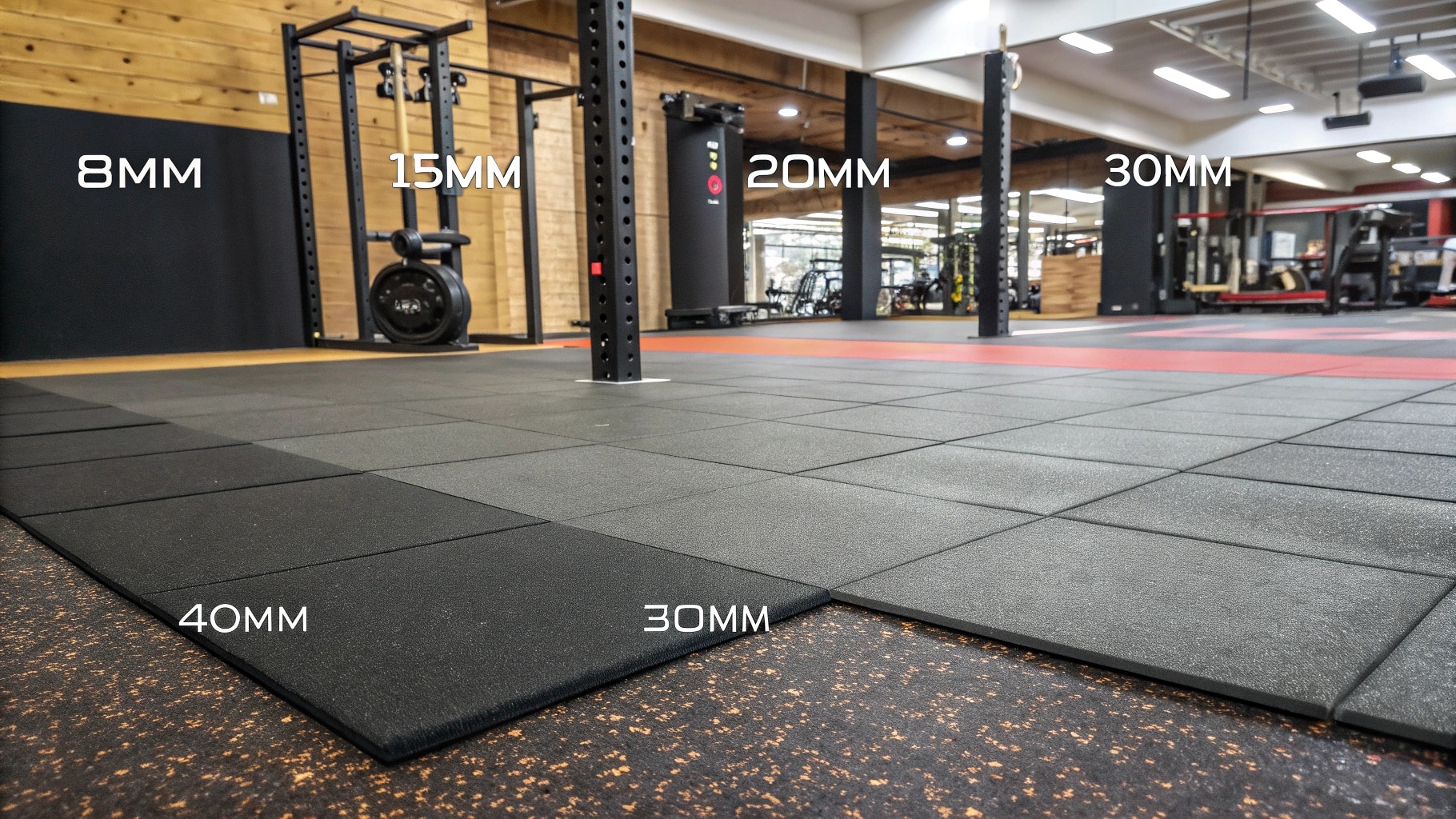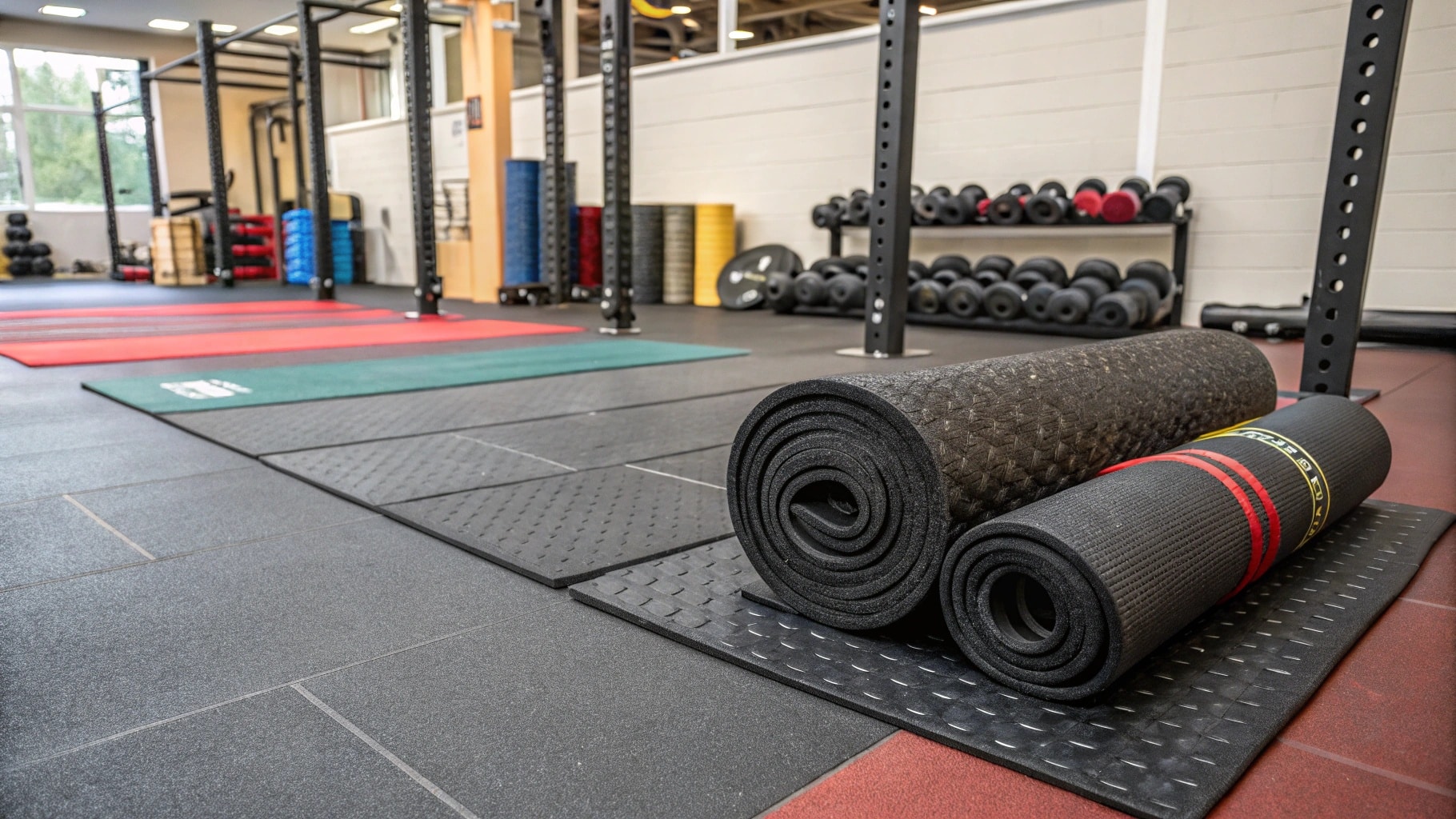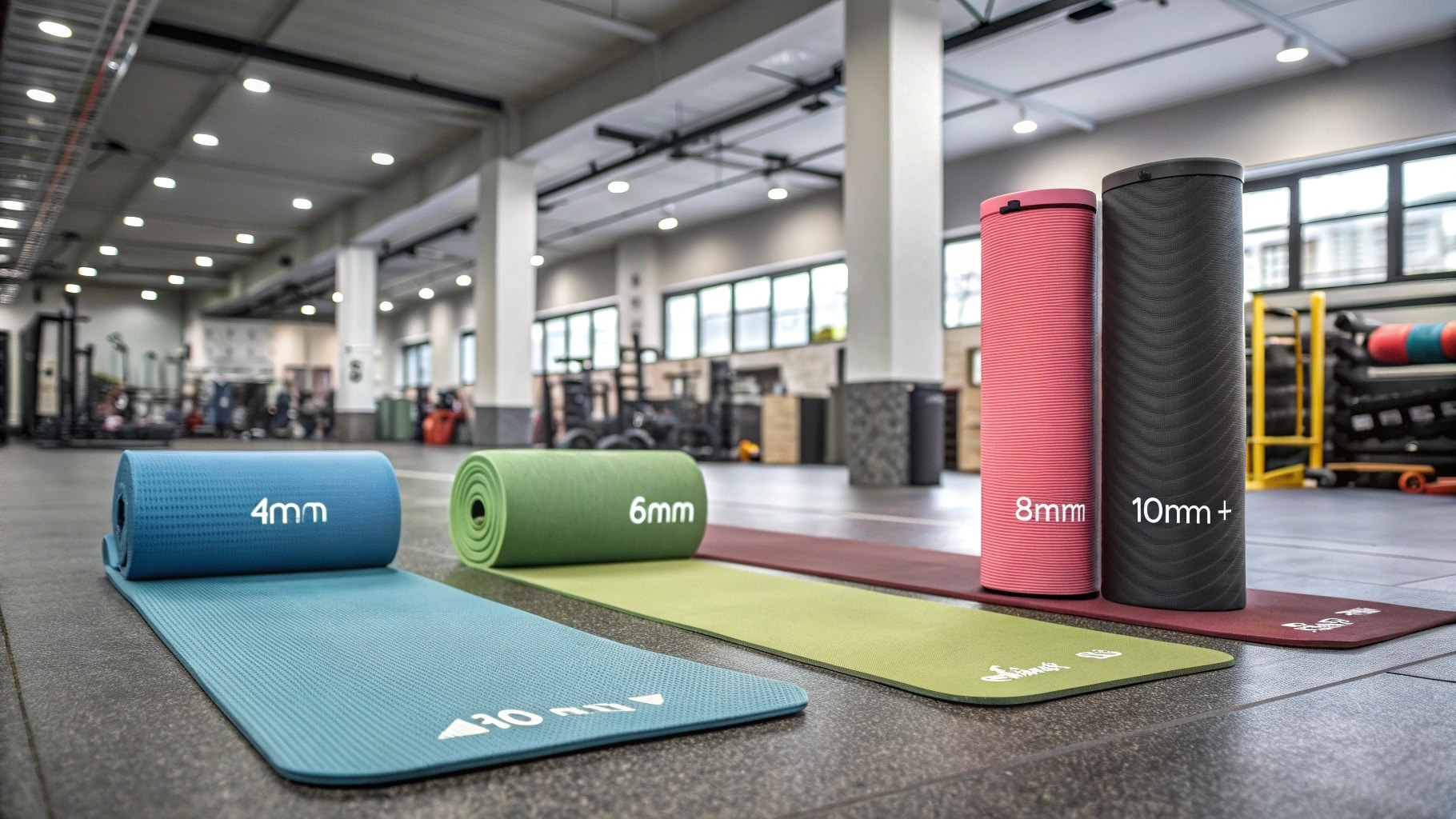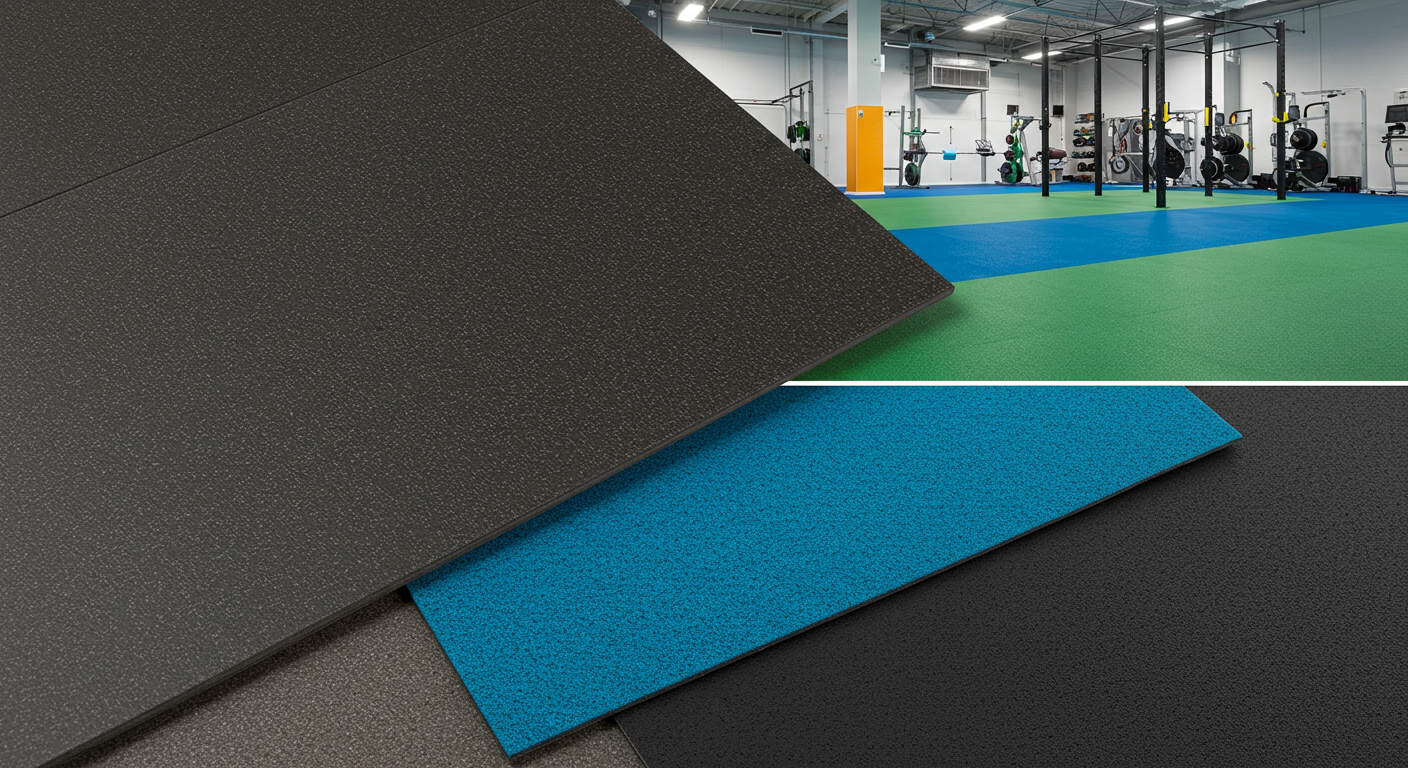Choosing gym flooring can be tough. So many choices, but you need something safe, durable, and maybe even good-looking. What’s the answer?
Well, there isn’t one "best" brand, because it depends on your needs. But, for consistent quality and a wide variety of choices, BYFIT1 is a solid option to explore, especially for B2B buyers. Think about durability, shock absorption, and anti-slip.

It isn’t easy to sift through all the options, but we’ll break it down. Let’s explore some key things, like thickness, materials, and what actually works best for your gym’s surface.
What is the best thickness for a rubber gym floor2?
Picking gym flooring feels like a chore, right? Too thin, and you risk damage. Too thick, and you’re wasting money. Where is the sweet spot?
The best thickness depends on the use. For basic cardio and light weights, 8mm is often enough. But, for heavy lifting and high-impact activities, you’ll want to consider 15mm or even thicker options like 20mm,30mm,40mm and 50mm.

Let’s dig a little deeper. It’s not just about a single number. It’s about understanding what activities happen in your gym.
Breaking Down Gym Floor Thickness
Think of it like choosing shoes. A thin sole is fine for walking, but you’d want more cushion for running a marathon. Similarly, different gym activities need different levels of protection.
| Thickness (mm) | Common Uses | Benefits | Drawbacks |
|---|---|---|---|
| 8 | Light weights, cardio, yoga, stretching | Cost-effective, easy to install | Not suitable for heavy lifting or high impact |
| 10 | General fitness, moderate weight training | Versatile, good balance of cost and protection | May not be enough for powerlifting |
| 15 | CrossFit, heavy weight training, some powerlifting | Excellent shock absorption, durable | More expensive, heavier to install |
| 20+ | Dedicated powerlifting areas, Olympic lifting | Maximum protection, noise reduction | Highest cost, may be overkill for some areas |
| 30 | heavy-duty applications such as in weight rooms or areas where heavy equipment is used | Reduces noise and vibration significantly. | May be excessive for lighter use areas. |
| 40 | Used in areas requiring the highest level of protection | Highest durability and soundproofing. | Cost and installation requirements increase. |
| 50 | Specialized use cases, like under very heavy machinery or in areas needing maximum shock absorption | Provides the utmost in flooring protection. | Generally unnecessary for typical gym use. |
I remember one time, a friend opened a small CrossFit box. He thought he could get away with thinner mats to save some money. Within a month, the concrete underneath started showing cracks. He ended up spending more replacing both the mats and repairing the subfloor. Always choose the right thickness.
What is the best material for a gym mat?
You’ve got your gym, and you’re ready to outfit it. But gym mats come in so many materials. It can be hard to know which is best, which is confusing.
For most gyms, rubber is the best material. It’s durable, provides good cushioning, and is relatively affordable. But within "rubber," there are different types, like recycled rubber, virgin rubber, and even blends with EPDM flecks for added color and durability.

But it’s not just "rubber" versus "not rubber." There are layers to this, just like choosing the right kind of wood for a piece of furniture.
Diving Deeper into Gym Mat Materials
Think of it like choosing a car. You wouldn’t just say "I want a car." You’d consider a truck, a sedan, or an SUV, depending on your needs. Gym mat materials are similar.
| Material | Pros | Cons | Best For |
|---|---|---|---|
| Recycled Rubber | Eco-friendly, durable, cost-effective, good shock absorption | Can have a strong rubber odor initially, color options limited | General gym use, weight rooms, CrossFit boxes |
| Virgin Rubber | Less odor than recycled, more consistent quality, can be more vibrant in color | More expensive than recycled rubber | High-end gyms, areas where aesthetics matter |
| EPDM Rubber | Excellent UV resistance, very durable, wide range of colors, often blended with other rubbers | Can be more expensive than standard recycled rubber | Outdoor gyms, areas with heavy sun exposure |
| PVC Rubber | Water-resistant, easy to clean, softer feel | Less durable than other rubber types, can be slippery when wet | Yoga studios, Pilates studios, stretching areas |
I remember visiting a gym once that had these beautiful, bright blue mats. Turns out, they were virgin rubber with EPDM flecks. They looked amazing, and the owner said they held up incredibly well even with constant use. That showed me the difference material can make.
What is the best surface for a gym floor?
The surface matters. A slippery floor is a hazard. A floor that’s too rough, and cleaning becomes a big problem. So, what’s the best option?
The best surface for a gym floor is one that is non-slip, but also easy to clean and maintain. Textured rubber is a very popular choice because it achieves this balance. The texture provides grip, while the rubber itself is relatively non-porous.

Let’s get practical. It’s about finding that sweet spot between safety and practicality.
Diving Deeper into Gym Floor Surfaces
Think of it like choosing tires for your car. You wouldn’t want racing slicks for everyday driving, and you wouldn’t want off-road tires for a race track. It’s about matching the surface to the use.
| Surface Type | Pros | Cons | Best For |
|---|---|---|---|
| Textured Rubber | Excellent grip, easy to clean, durable, good for a wide range of activities | Can be slightly more expensive than smooth rubber | Most gyms, weight rooms, CrossFit |
| Smooth Rubber | Easier to clean than textured, can look more sleek | Can be slippery, especially when wet, not ideal for high-impact activities or heavy weights | Cardio areas, stretching areas, yoga studios |
| Interlocking Tiles | Easy to install, customizable, can be replaced individually if damaged | Seams can collect dirt and moisture if not properly sealed, can shift under heavy loads | Home gyms, smaller studios, temporary setups |
I once worked with a gym owner who was adamant about having a perfectly smooth floor. It looked great at first, but after a few sweaty workouts, it became a slip-and-slide. They ended up having to apply a special anti-slip coating, which added to their costs. Lesson, texture helps.
What is the best thickness for a fitness mat?
Fitness mats seem simple, right? But even here, thickness matters. Too thin, and your joints ache. Too thick, and you lose stability.
For general fitness activities like yoga and Pilates, a 4-6mm mat is usually ideal. It provides enough cushioning without feeling unstable. For more intense floor exercises or if you need extra joint support, 8mm or even thicker might be better.

It is about finding that balance between comfort and stability. Let’s explore this further.
Diving Deeper into Fitness Mat Thickness
Think of a fitness mat like a mattress. A super-thin mattress might be okay for a night or two, but you’d want something more substantial for long-term comfort.
| Thickness (mm) | Common Uses | Benefits | Drawbacks |
|---|---|---|---|
| 4-6 | Yoga, Pilates, general floor exercises | Lightweight, portable, provides adequate cushioning | May not be enough for high-impact or joint issues |
| 8 | More intense floor work, added joint support | Extra cushioning, more comfortable | Can feel slightly less stable for some exercises |
| 10+ | Specialized needs, injury recovery | Maximum cushioning, joint protec |
I remember teaching a yoga class once, and a student brought in a super-thin travel mat. She spent the whole class wincing every time we did a pose on our knees. After class, she admitted she needed something thicker. It shows how important the right thickness3 is.
Conclusion
Choosing the right rubber mat4, thickness, material, and surface isn’t just about price. It’s about safety, durability, and even the look5 of your gym. Think about your needs, and don’t be afraid to ask questions!
-
Explore BYFIT for its consistent quality and variety in gym flooring options, perfect for B2B buyers. ↩
-
Discover the best materials for rubber gym floors to ensure durability and safety in your gym setup. ↩
-
Understanding the significance of mat thickness can enhance your yoga experience and prevent discomfort during practice. ↩
-
Explore the advantages of rubber mats, including safety and durability, to make an informed choice for your practice. ↩
-
Learn how these factors influence your choice of gym mats for a better workout environment. ↩



